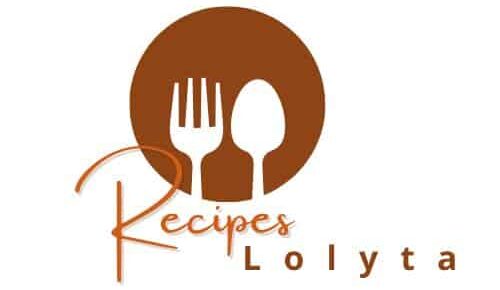Lemon Zucchini Bread: A Citrusy Delight for Every Occasion
Imagine the perfect summer day, where the air is filled with the fresh scent of lemons and your garden is brimming with vibrant zucchinis. Transform this picturesque scene into a delicious reality with our Lemon Zucchini Bread. This delightful recipe combines the bright tang of lemon with the calming undertone of garden-fresh zucchini, creating a moist and flavorful bread that is as satisfying as it is easy to make.
Lemon Zucchini Bread is a stellar dessert option that beautifully captures the essence of summer. Whether you’re hosting an afternoon tea or packing a picnic basket, this bread promises to be a crowd-pleaser. Experience the harmonious balance of sweetness and citrus, complemented by the subtle, nutritious kick of shredded zucchini. Each bite is a testament to the perfect marriage of flavor and texture—slightly crisp on the outside yet lusciously soft on the inside.
Quick Recipe Highlights
- Flavor Profile: A delightful mix of sweet and tart, this bread offers a citrusy burst with a hint of wholesome earthiness from the zucchini.
- Texture: Expect a tender crumb that’s moist and slightly dense, striking the ideal balance between cake and bread.
- Aroma: The refreshing scent of lemon zest mingles with warm vanilla notes, creating an inviting aroma.
- Visual Appeal: A golden-brown exterior conceals flecks of green zucchini, with a glossy drizzle of lemon glaze adding the final touch.
- Skill Level Needed: Perfect for beginner bakers, as it requires basic mixing and baking techniques.
- Special Equipment: A standard loaf pan, mixing bowls, and a grater for the zucchini.
Recipe Overview
- Difficulty Level: This recipe is straightforward, ideal for bakers of all levels. Precise measurements and simple steps ensure consistent results every time.
- Category: Lemon Zucchini Bread excellently fits into dessert, snack, and breakfast categories, offering versatility for various meal settings.
- Cuisine: Rooted in American comfort food traditions, it draws inspiration from home-baked goods with a garden-fresh twist.
- Cost: Utilizing seasonal produce like zucchini makes this an affordable treat, with ingredients that are budget-friendly and easily accessible.
- Season: Best enjoyed in summer when zucchinis and lemons are at their peak freshness, though delightful year-round.
- Occasion: Suitable for a range of events such as brunches, picnics, and casual gatherings, bringing a touch of homemade warmth and hospitality.
Why You’ll Love This Recipe
Lemon Zucchini Bread captures the essence of a perfect sweet treat by marrying taste with texture. The delightful interplay of lemon zest provides a vibrant zing that is perfectly complemented by the subtle presence of zucchini, ensuring every bite is juicy and refreshing. This bread is versatile enough to serve as a light breakfast, a quick snack, or an after-dinner dessert, offering unmatched convenience whenever you crave something special.
Beyond its delightful taste, this bread boasts several nutritional benefits. With zucchini as a primary ingredient, it’s enriched with vitamins A and C, potassium, and dietary fiber. These nutrients contribute to better digestion and overall well-being. Additionally, using natural lemon juice offers a dose of vitamin C and antioxidants. This recipe proves that indulgence can also be nutritious.
For those who love social gatherings, Lemon Zucchini Bread is a hit at brunches and picnics. Its refreshing flavor profile and inviting aroma create an atmosphere of relaxation and enjoyment. Share this delightful bread with friends or family, and watch as it becomes a conversational centerpiece, praised for its unique ingredients and delicious taste.
Economical and easily adaptable, this recipe doesn’t require any fancy ingredients or special trips to niche grocery stores. With most items already in your pantry, your wallet will thank you as much as your taste buds. Making Lemon Zucchini Bread is an exercise in ease and efficiency, delivering gourmet results without a gourmet price tag.
Embracing all these aspects, Lemon Zucchini Bread invites you to experiment and enjoy a recipe that values accessibility and bold flavor. It is a celebration of culinary creativity, allowing you to adapt and modify based on seasonal changes or personal preferences, ensuring that this delightful bread never gets old, but instead evolves with you.
Historical Background and Cultural Significance
Lemon Zucchini Bread is an evolution of traditional zucchini bread, which gained popularity in America during the 1970s when home gardeners sought inventive ways to use their abundant zucchini harvests. The fusion of lemon in this particular bread adds a citrus twist that brightens the traditional recipe, reflecting both environmental awareness and culinary creativity during that era.
Zucchini bread showcases cultural importance as part of the larger tradition of quick breads in American cuisine. Quick breads are heralded for requiring no yeast and minimal rising time, making them accessible and quick to prepare. The incorporation of zucchini, a summer squash, highlights the ingenuity of using fresh produce to enhance flavor and moisture.
Over time, variations of this bread have emerged and grown in popularity. Contemporary takes on lemon zucchini bread across regions include incorporating nuts or seeds for added crunch or using alternative sweeteners like honey or agave to cater to health-conscious individuals. These changes reflect the adaptability of the recipe while respecting its core appeal.
Regionally, Lemon Zucchini Bread has been adapted to suit various flavor preferences and dietary requirements. In some parts, it is adorned with a luscious lemon glaze for extra sweetness. Others may add aromatic spices like nutmeg or cinnamon, showcasing the versatile nature of this beloved bread and ensuring its place in both traditional and modern kitchens.
Ingredient Deep Dive
Zucchini, a staple in this bread, originated from the Americas and was brought to Europe in the early 16th century, where it was cultivated into the vegetable we know today. It’s favored not only for its mild flavor but also for its health benefits, including being low in calories while high in vitamins like C and A. In cooking, selecting firm zucchinis with bright skin ensures freshness, while storing them in a cool, dry place maintains their texture for longer.
Lemon, the key flavoring in Lemon Zucchini Bread, has an illustrious history as a symbol of purity and freshness. Tracing its origins to North India, lemons are prized for their high vitamin C content. When selecting lemons, choose those that are firm and feel heavy for their size. Proper storage in a refrigerator extends their shelf life. If lemons aren’t available, lime or even orange can serve as substitutions, although the flavor profile will shift to accommodate these changes.
Common Mistakes to Avoid
- Grating Zucchini: Ensure you grate it finely to evenly distribute moisture and incorporate it smoothly into the batter.
- Draining Zucchini: Avoid squeezing out too much moisture from zucchini, as it helps keep the bread moist throughout.
- Over-Mixing: Mix the batter just until ingredients are combined to prevent a dense final product.
- Ignoring Lemon Zest: This component is key for burst flavor, so don’t skip it for a true lemony experience.
- Baking Temperature: A consistent oven temperature ensures even cooking and prevents burning or undercooking the bread.
- Skipping the Glaze: The lemon glaze adds essential sweetness and tartness, enhancing the overall taste profile.
- Improper Pan Greasing: Thoroughly grease the pan to facilitate easy removal after baking, preventing structural damage to the loaf.
- Incorrect Storage: Store the bread in an air-tight container to maintain moisture and avoid it drying out.
Essential Techniques
Grating zucchini finely enhances the bread’s texture, integrating seamlessly without the need for additional liquids. Use a box grater or a food processor to achieve consistency, as this ensures even distribution during mixing and contributes to the bread’s overall moisture.
Master mixing techniques by gently folding ingredients together rather than vigorously beating, which can result in excessive gluten development. Observe when the batter achieves a smooth appearance with no visible flour pockets, as this signals readiness for baking.
A well-timed bake is essential for achieving the perfect tenderness. Visual cues include a golden-brown color on top and a cake tester coming out clean, indicating the center is fully set. Use an oven thermometer for accuracy to ensure prescribed baking temperature.
Pro Tips for Perfect Lemon Zucchini Bread
Integrate lemon zest into sugar using your fingers to release essential oils, infusing the batter with intensified lemon flavor.
Experiment with different flour types like whole wheat for a nutritious spin without compromising on flavor and texture.
For a richer taste, consider adding a tablespoon of Greek yogurt into your batter, introducing a slight tanginess and extra moisture.
Switch up your nuts by incorporating walnuts or pecans, offering a delightful crunch and complementary earthiness.
Enhance your glaze with a dash of almond extract for a new flavor dimension that pairs beautifully with lemon.
Try baking mini loaves to shorten bake time and create giftable delights, adjusting oven times accordingly.
Variations and Adaptations
Give Lemon Zucchini Bread a regional twist by incorporating local ingredients, such as using Meyer lemons in California for a sweeter flavor or adding coconut flakes in tropical climates to enhance the bread’s texture and taste.
Adapt the bread for winter by incorporating warming spices like cinnamon and nutmeg, creating a comforting treat that suits the colder season perfectly.
For those on a gluten-free diet, swap traditional flour with almond or oat flour, which maintains moisture while offering a slightly nutty undertone.
Add blueberries or raspberries for a fruity component, uplifting the bread with bits of juiciness and visual flair throughout the crumb.
Modify the bread into a muffin format by using muffin tins, perfect for on-the-go breakfasts and portion control.
Presentation alternatives include serving with a side of mascarpone cheese for a creamy complement, or drizzling a chocolate glaze for a dessert-esque finish.
Serving and Presentation Guide
For a classic presentation, slice the bread thickly and serve it with a simple lemon glaze drizzle, allowing it to catch the light and emphasize texture. Complement with a sprinkle of freshly grated lemon zest for added color contrast.
Enhance plating by garnishing with edible flowers or fresh herb sprigs, like mint, adding an aromatic touch that elevates the bread’s visual appeal.
Provide traditional accompaniments such as clotted cream or a pat of salted butter to pair with slices, offering a rich contrast to the lemony tartness.
Serve the bread warm with a dusting of powdered sugar, capturing a nostalgia-inducing sweetness that looks inviting.
Consider temperature variations, like serving chilled with a dollop of whipped cream in warmer months or toasted with butter for cold mornings to enhance depth of flavor.
Practice portion control by slicing in advance, ensuring uniformity and making it easier for guests to serve themselves.
Wine and Beverage Pairing
For wine pairings, choose a semi-sweet white like Riesling or a crisp Prosecco, which highlights the bread’s citrus notes while introducing a refreshing contrast.
Non-alcoholic options include a glass of iced tea with lemon or a ginger lemon mocktail, both sharing thematic flavors that enhance the bread experience.
Coffee pairs wonderfully with this bread; select a mild roast to ensure it doesn’t overpower the subtle lemon and zucchini flavors.
During winter, consider serving with a spiced chai, where the warm spices play well against the cooling zest of the bread.
Ensure any beverage, whether alcoholic or not, is served cold for a refreshing counter to the ambient temperature of the bread, unless enjoyed as a cozy winter treat.
Serve beverages in clear glassware to mirror the aesthetic of Lemon Zucchini Bread’s clean, light presentation and enhance the dining experience.
Storage and Shelf Life
To preserve freshness, wrap the bread in cling film before placing it in an airtight container, keeping it at room temperature for up to three days. For longer storage, refrigerate and ensure it’s tightly wrapped.
Recognize spoilage signs such as a sour smell or mold growth, as these indicate the bread is past its prime and should be discarded for safety.
Reheating can be done in the oven at a low temperature to restore slight crispness, taking care not to dry out the interior.
For freezing, slice the bread before placing it in sealed, freezer-safe bags. When ready to enjoy, defrost at room temperature and toast if desired.
Consider adding a moisture-retaining element, like a slice of apple or bread, when storing to prolong the shelf life and soft texture of the bread.
Make Ahead Strategies
Plan by preparing the batter a day in advance and storing it covered in the refrigerator, baking it fresh the next day for optimal flavor.
In the interim, place prepped ingredients like grated zucchini in a separate container, ready to combine without losing quality.
Quality remains intact even when assembled in stages, allowing for efficient time management; just ensure the batter isn’t over-mixed to protect structural integrity.
Reheating slices individually instead of whole loaves maintains freshness and ensures even warming.
When serving fresh elements, drizzle glaze after reheating for renewed sheen and to replenish the vibrant flavor lost during storage.
Fresh fruits or garnishes can be added freshly to maintain the visual and taste appeal, adapting to the availability and seasonality of ingredients.
Scaling Instructions
For smaller gatherings, halving the recipe involves adjusting the baking time by checking for doneness earlier and using a smaller loaf pan for even cooking.
Doubling or tripling the recipe includes scaling up ingredient quantities proportionately and ensuring ample mixing space and oven capacity.
Larger measurements might require bigger mixers and more substantial bowls to accommodate the increased quantity of batter without spillage.
An extended baking time might be necessary for larger loaves, monitoring closely to prevent overt crispness or drying out.
Upon expansion, factor in storage capacity to ensure freshness, relying on proper containment methods to offer longevity to both flavor and texture.
In larger quantities, consider freezing extra loaves pre-sliced, making it simpler to access and reduce food waste.
Nutritional Deep Dive
Macro breakdown: A single serving typically comprises a balanced dose of carbohydrates and a moderate amount of fats and proteins, ideal for maintaining energy levels.
Micronutrient analysis highlights a rich content of vitamins such as B6, folate from zucchini, and vitamin C from lemons, contributing positively towards daily recommendations.
Health benefits include better digestion thanks to fiber in zucchini and potential immune boosts from lemon’s antioxidants.
Dietary considerations: Suitable for meat-free diets and accessible for those looking to reduce sugar by modifying the glaze to unrefined alternatives like honey.
Portion analysis emphasizes mindful eating, allowing indulgence without overconsumption, as the medium-slice serves both taste and nutrition goals.
A focus on balanced ingredients avoids overly rich or heavy components, positioning this bread as both satisfying and fitting for weight management strategies.
Dietary Adaptations
For a gluten-free alternative, substitute all-purpose flour with gluten-free blends that incorporate xanthan gum for structure retention without compromising on taste.
Create a dairy-free version by swapping butter with coconut oil or canola oil, maintaining moistness and richness without the use of dairy products.
Adapt for vegan diets by replacing eggs with applesauce or flaxseed meal, crafting a nutritious bread that aligns with vegan ethics and preferences.
Low-carb seekers may reduce sugar content or explore low-carb flour alternatives like almond flour, achieving a lower glycemic index while retaining mouthfeel.
Keto adjustments involve further limiting sugars and opting for cream-based glazes to fill caloric needs with rich, dietary-wide flavors.
Paleo enthusiasts can lean toward natural sweeteners and almond or coconut flour, staying true to dietary principles that include whole, unprocessed foods.
For those requiring low-FODMAP adjustments, choose leaveners and flour alternatives carefully, ensuring they align within permissible thresholds.
Troubleshooting Guide
Texture issues: Should the bread be too dense, consider not over-mixing the batter; incorporate ingredients until just combined for a light, airy crumb.
Flavor balance concerns can be rectified by verifying the freshness of lemons and enhancing zest quantities if flavor falls short.
Temperature problems: Avoid underbaking through vigilant monitoring, particularly towards the end of baking time when temp fluctuations are more impactful.
Equipment challenges: If lacking specialty equipment like a stand mixer, rely on hand mixing, focusing on consistency and evenly blending components.
Ingredient substitutions should prioritize similar ratios and moisture content to maintain the balance, adjusting liquid components where necessary if consistency shifts.
Timing concerns may result from late addition of key ingredients, so prep thoroughly to ensure all steps are seamlessly followed for perfect outcomes.
Recipe Success Stories
Many readers have shared their success stories of customizing Lemon Zucchini Bread, with delightful adaptations like including seasonal berries or experimenting with various nuts for texture.
Others have written about how this recipe provides an excellent platform for introducing children to baking, offering an educational and enjoyable culinary experience.
Community feedback frequently highlights versatility, with tales of small tweaks leading to unexpectedly delicious results that emphasize the recipe’s creative flexibility.
One user shared using this bread in unique brunch settings as an ice-breaker, sparking conversations through shared enjoyment and food-centered bonding.
Photography enthusiasts praise the bread’s natural visual appeal, presenting opportunities for staging vibrant color contrast with simple plating tools and available ingredients.
Frequently Asked Questions
Can I make Lemon Zucchini Bread without eggs?
Yes, eggs can be substituted with alternatives like applesauce or flaxseed meal. For each egg, use 1/4 cup of unsweetened applesauce or combine one tablespoon of flaxseed meal with three tablespoons of water (letting it sit for 5 minutes).
Will using frozen zucchini affect the recipe?
Frozen zucchini is usable but ensure it is thoroughly drained after thawing to prevent excess moisture, which could lead to a soggy texture in the bread.
Is it necessary to peel the zucchini before grating?
Peeling zucchini is not required, and keeping the skin on adds nutritional value and texture, with its green specks also contributing visually.
How do I store leftover Lemon Zucchini Bread?
Store in an airtight container at room temperature for up to three days, or refrigerate for prolonged freshness. For freezing, sliced servings are ideal, allowing convenient access.
Can I omit the glaze for a less sweet version?
The glaze can be omitted to reduce sweetness. However, consider adding more lemon zest to the batter for a maintained zing.
What is the best way to serve Lemon Zucchini Bread?
It is versatile, delicious warm with a pat of butter for breakfast or chilled with whipped cream as a dessert; serve per your preference or occasion.
Do I need to use fresh lemons, or will bottled juice suffice?
Fresh lemons are highly recommended for their zest and robust flavor profile, though bottled juice can be used in a pinch if fresh is unavailable.
Will this recipe work with other types of squash?
Other tender summer squashes can be entertained, though flavor profiles may alter slightly, requiring possible recipe tweaks to maintain optimal taste.
Can I make mini loaves from this recipe?
Yes, using mini loaf pans requires adjusting bake times, checking doneness around 20-30 minutes due to size variance affecting heat distribution.
What about adding extra flavors or spices?
Feel free to customize with spices like nutmeg or cardamom for an exotic flair or incorporate vanilla extract for enhanced depth alongside lemon.
Additional Resources
For those interested, explore related recipes like lemon poppy seed muffins or zucchini chocolate cake, tapping into different tastes and textures while utilizing similar core ingredients.
Delve into technique guides on achieving the perfect quick bread rise without yeast, ensuring light and airy bakes across comparable recipes.
Ingredient information shows how zucchini’s water content compares to other fruits and veggies, aiding baking adaptations beyond this easy bread.
Leverage equipment recommendations for baking goods, exploring the benefits of silicone versus metal loaf tins and their impact on results.
For seasonal variations, consult articles on preserving and storing fresh lemons and zucchini, maximizing the recipe’s sustainability and minimizing waste.
Print
Lemon Zucchini Bread
Description
A moist and zesty zucchini bread with a hint of lemon, perfect for breakfast or dessert.
Ingredients
For the Crust:
- 2 cups grated zucchini
- 1 1/2 cups all-purpose flour
- 1 cup granulated sugar
- 1/2 cup vegetable oil
- 1/4 cup lemon juice
- 2 eggs
- 1 teaspoon baking powder
- 1/2 teaspoon baking soda
- 1/2 teaspoon salt
- 1 tablespoon lemon zest
Instructions
1. Prepare the Crust:
- Preheat oven to 350°F (175°C) and grease a loaf pan.
- In a large bowl, mix together the grated zucchini, sugar, oil, lemon juice, and eggs.
- In another bowl, whisk together flour, baking powder, baking soda, salt, and lemon zest.
- Combine the wet and dry ingredients, stirring until just combined.
- Pour the batter into the prepared loaf pan and bake for 50-60 minutes, or until a toothpick inserted into the center comes out clean.
- Allow to cool in the pan for 10 minutes, then transfer to a wire rack to cool completely.
Notes
You can customize the seasonings to taste.




